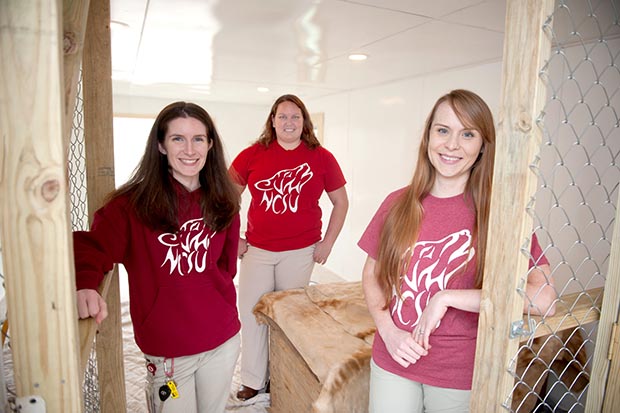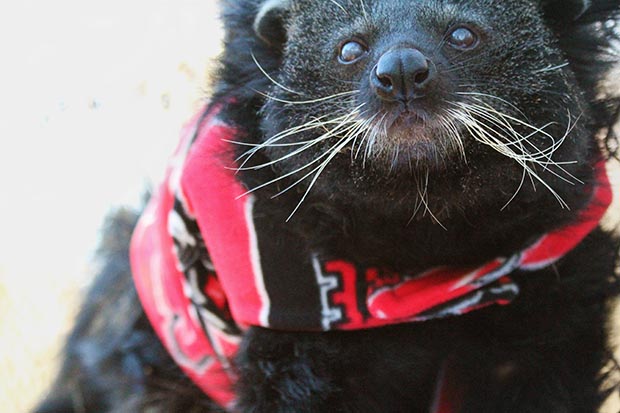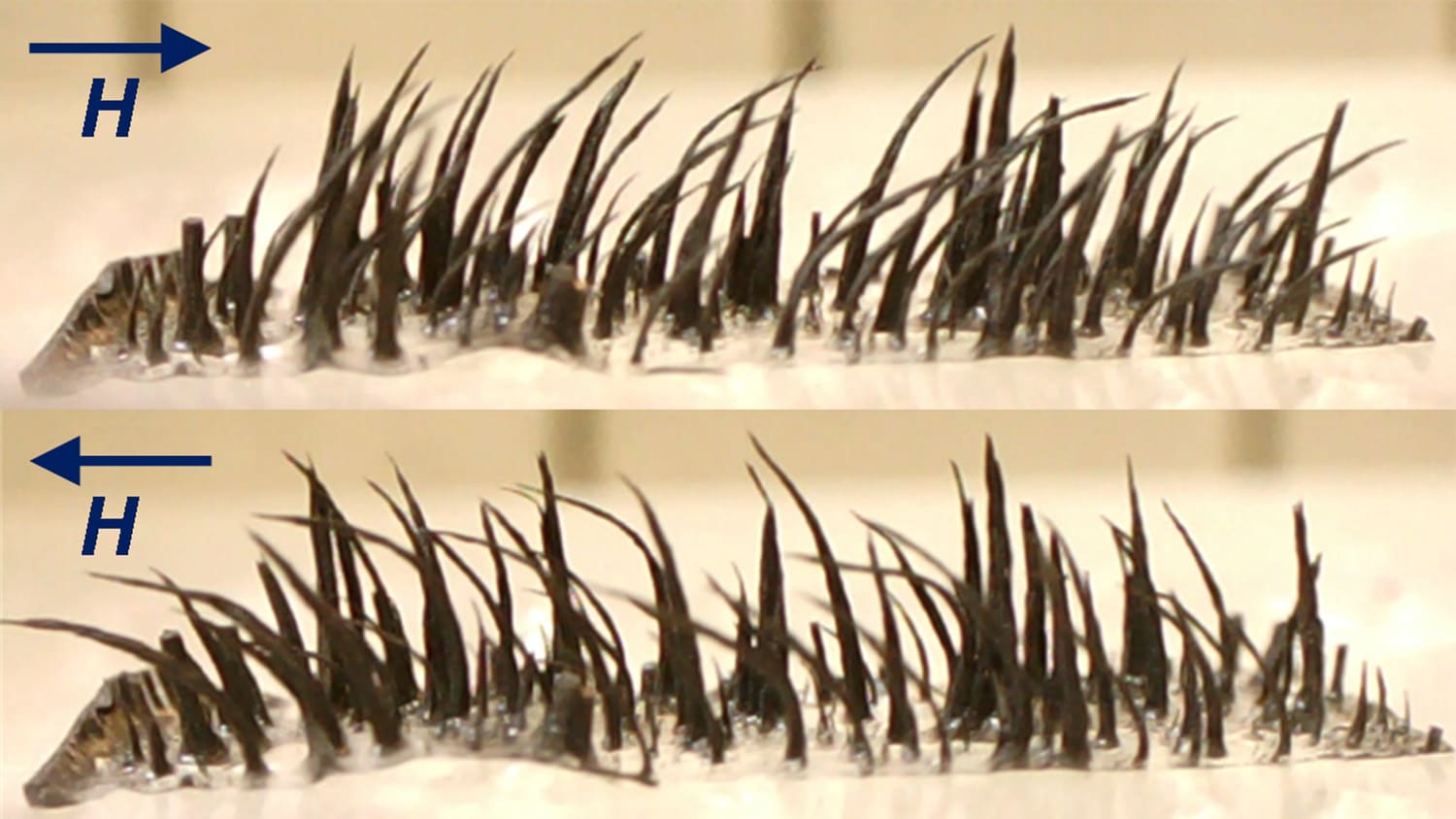Lobo’s Hope
Lobo is a five-year-old binturong with a tail that wouldn’t uncurl – a definite problem for a tree-dwelling carnivore who needs a flexible tail in order to get around. But Lobo’s crooked tail is just part of his story, which began a few years ago when he was rescued from a living situation that left him with several health issues. Following his rescue, Lobo found a home at the Conservators’ Center, a nonprofit organization in Burlington, N.C. that preserves a variety of threatened species. The Center’s staff brought Lobo to NC State’s College of Veterinary Medicine in order to help him regain his health and see what could be done to rehabilitate his tail.
Exotic animals like Lobo can pose a challenge for traditional veterinarians, who probably don’t see a lot of lions, tigers or binturongs – none of which are native to the Southeastern U.S.; binturongs hail from Southeast Asia – in their local practices. But NC State is trying to remedy that situation through the carnivore team, a group of veterinary students who work with the kinds of animals that you may find only in zoos or private conservation reserves.
Suzanne Kennedy-Stoskopf is the faculty creator and advisor of the carnivore team. With a clinical background in zoological and wildlife medicine, she felt that it was important that students be able to work with non-domestic species.
“There is a significant population of exotic animals in the U.S.,” says Kennedy-Stoskopf, “and it’s really important that these animals have access to quality veterinary care. In traditional curriculums most students do not get exposure to how to safely work around these animals, so the carnivore team was created to allow them to get experience while they’re still veterinary students.”

The team was founded three years ago, and students can join in their first, second or third year of vet school. There are around 40 members of the team, and each member devotes three days per month to team projects. Kennedy-Stoskopf has partnered with the Conservators’ Center, which keeps numerous exotic species, including lions and other wild cats, wolves, and of course, binturongs.
Michelle Schisa is one of the founding members of the carnivore team. She is responsible for organizing the other team members for trips out to the Conservators’ Center. Lobo’s case gave the team a great opportunity to learn more about binturongs, as well as some hands-on practical experience.
“The carnivore team was responsible for conducting the initial head-to-toe physical exam,” Schisa says. “That included making sure he was comfortable under anesthesia, administering intravenous fluids and monitoring his condition throughout the exam. This is a unique experience that many vet students don’t get while they’re in school – and I’m hoping it will help me get a job with a zoological facility, either somewhere like the Conservators’ Center or at a typical zoo.”
While the team provides an excellent training opportunity for veterinary students who want to go into zoological or wildlife medicine, it also fills medical care needs for organizations like the Conservators’ Center.
According to Mindy Stinner, executive director of the Conservators’ Center, “Binturongs are one of the more unusual species living at the Center, so we’re really pleased that the veterinarians at NC State have enough experience with these animals to take on some of our more difficult cases, like Lobo.

“When he arrived he received the urgent care he required, but he needed some follow-up care. Lobo had several medical issues, including the fact that the end of his tail wouldn’t unfurl properly. We were concerned about the pain this caused him because it got caught on the edges of platforms, his denbox and other items when he moved around his habitat. We kept it bandaged and softened the edges of the enrichment in his habitat to minimize damage. But every time it started to heal he managed to snag it on something and re-open the wounds. So we consulted the experts at NC State.”
With guidance from the veterinarians, Lobo’s caregivers gave him daily tail massage and stretching exercises in an effort to rehabilitate it. They also began a modified diet featuring fruit smoothies to help him with a kidney issue. Over time it became clear to the Center’s staff and the NC State veterinarians that the best option for Lobo was to amputate part of his tail.
Fortunately for this feisty binturong, his outlook is good. Stinner says that he has adjusted well to his new tail length. Although he cannot grasp with it, now that he is unencumbered by the weight of the damaged section and the hooked tip, he is better able to climb about his habitat. And his kidney function is normal, thanks to the diet he had been prescribed.
“We’re really pleased with Lobo’s improvement,” Stinner says. “The carnivore team offered excellent medical guidance to our vet tech, who oversees his ongoing care. The specialty care that NC State provided for Lobo will ensure him a very good quality of life.”


